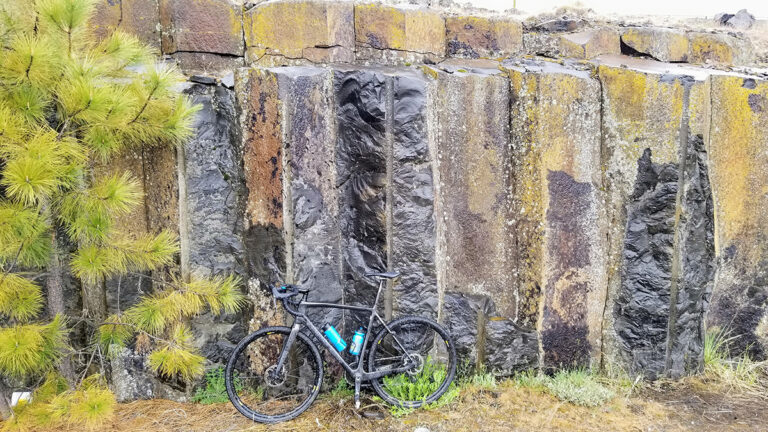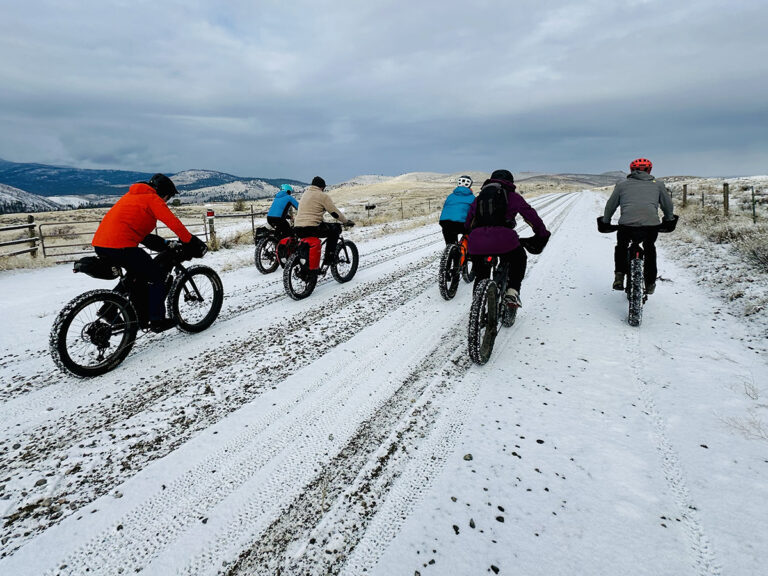Find yourself strolling along Market Street these days and you might stop in to browse antiques or sit to drink a coffee. Five months ago, you would have been brave to walk the then-narrow sidewalk.
“There’s a new sound [on the street],” says long-time Hillyard resident and community activist Paul Hamilton. “It’s the clickety-clickety-clack of skateboards. It’s the people parking their bikes on the new bike racks.”
In Hillyard, the lowest-income neighborhood per capita in Washington State, sustainable development also means better quality of life. In the case of the newly reconstructed Market Street corridor, it means walkable streets and a more welcoming, vibrant business district.
Street improvement isn’t always this revolutionary, but Hamilton says Hillyard was ripe for a transformation. Maybe it’s that many families in the area have been around for generations and remember when Hillyard was a thriving industrial community. Maybe it’s that many current residents are concerned parents of young children. Maybe it’s that Hillyard has more undeveloped land than any other district in the City of Spokane, so there’s a lot of room to dream.
The Market Street project was targeted for innovative improvements because the community contributed to the process, says Mike Taylor, City of Spokane director of engineering. “A lot of it was due to the Hillyard Neighborhood Business Association,” he says. “They decided to assist themselves through a limited improvement district.”
IT TAKES A NEIGHBORHOOD
Hillyard is ideal for innovative development because citizens are highly-organized, says Hamilton. “We’re all a part of what happened on the Market Street reconstruction.” Five months into the project, some 20 people from the community were still showing up for the weekly construction meetings. “We began public meetings for the community 18 months before a shovel even hit the ground.” That meant residents could voice their concerns, for example, about increased traffic on neighborhood streets and loss of business along the construction zone—and be part of finding solutions.
The money raised by the Business Association, combined with federal and state money procured by the City of Spokane, funded a long list of improvements—from the sidewalks and LED street lamps to the below-the-pavement wiring required to support electrical car hook-ups—and that’s how Market Street became the guinea pig for sustainable development in Spokane. City Councilman Bob Apple says Market Street lays the groundwork for incorporating environmentally-friendly features into planned street improvements across the city. “Above and beyond what we [usually] do when we replace a street,” says Apple, “we are putting trees in, and the street lights will be LED.”
PEDESTRIAN SAFE
Previously, says Hamilton, much of the street did not have a sidewalk at all, much less the well-lit, tree-lined [58 new trees, to be exact], eight-foot-wide walkway that’s recently been installed.
To increase pedestrian safety, the sidewalks include traffic-calming measures like bump-out curbs at crosswalks and radar signs for vehicle speed. “You can stand there and watch people hit the brakes when they drive by the radar screen,” says Hamilton. Slower traffic and wider sidewalks, along with street-level LED street lamps, means people feel—and are—safer when they walk, ride their bikes and play in the area. That means neighborhood locals are more likely to walk to their destination instead of drive.
CRUSHED GLASS. WHAT’S YOUR STREET PAVED WITH?
Prior to the recession, the City of Spokane transported crushed, recycled glass out of state for processing. Even that process, says Taylor, was degrading to the environment. Then, as the recycling industry began to suffer, out-of-state became out-of-country—the closest remaining processing plant is in Canada.
The City used Market Street to try mixing crushed glass into the structural fill for street repavement. It worked.
“We showed that it would blend properly and still meet department of transportation standards,” says Taylor. “It was a proof of concept.” That means more repaving can be done around the city using crushed glass. In the case of Market Street, using crushed glass upped the project cost, but the city expects the cost will lower with time—and be offset by the savings from reusing our recycled glass locally.
LED STREET LAMPS
In another “proof of concept” move, the City is installing LED street lamps along the Market Street corridor. Despite a higher initial cost, the City will save some $12,000 in energy bills annually. “We’re literally the first ones out of the chute. This is brand new technology,” says Taylor. “The [manufactures are] modifying what they’re delivering here based upon our review and suggestions.”
It will be the longest string of LED street lights in the nation, says Councilman Apple. Moreover, the lamps have been crafted feel like old-style street lamps, situated at a level that benefits people on foot.
ELECTRIC CAR HOOK-UPS
Off the main stretch, on Queen Street, conduits for electric car chargers have been installed. “It’s just this magic network underneath the streets and sidewalks,” says Taylor. Of course, neither the City nor any private company in Spokane has the capacity to operate these chargers. In order for them to be functional, some entity has to own, operate and maintain them, he says. And when that entity comes along, Hillyard will be ready for it.
Why add infrastructure that’s currently unusable? Taylor argues that it would be much pricier to tear up and repave the streets just to install that magic network later on. “It’s really not that expensive when you do it in conjunction with other improvements.”
Hamilton, who has worked for decades to improve his neighborhood through its civic organizations, is pleased with the new Market Street. Even though it’s the “green” stuff that draws the pedestrians and skateboarders to the downtown area—the sidewalks, the trees and the lights—he’s simply satisfied to hear the sounds of a healthier, more beautiful community. “When they finished the paving and the sidewalks were all done, I stood in the middle of the street, and I said, ‘Here is the 8×10 glossy picture that I’ve been waiting for my whole life.’”











